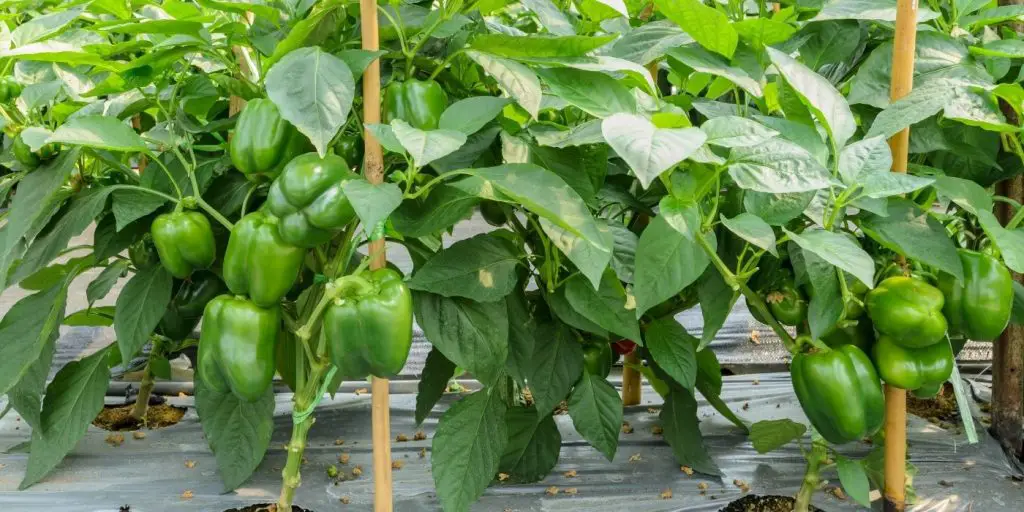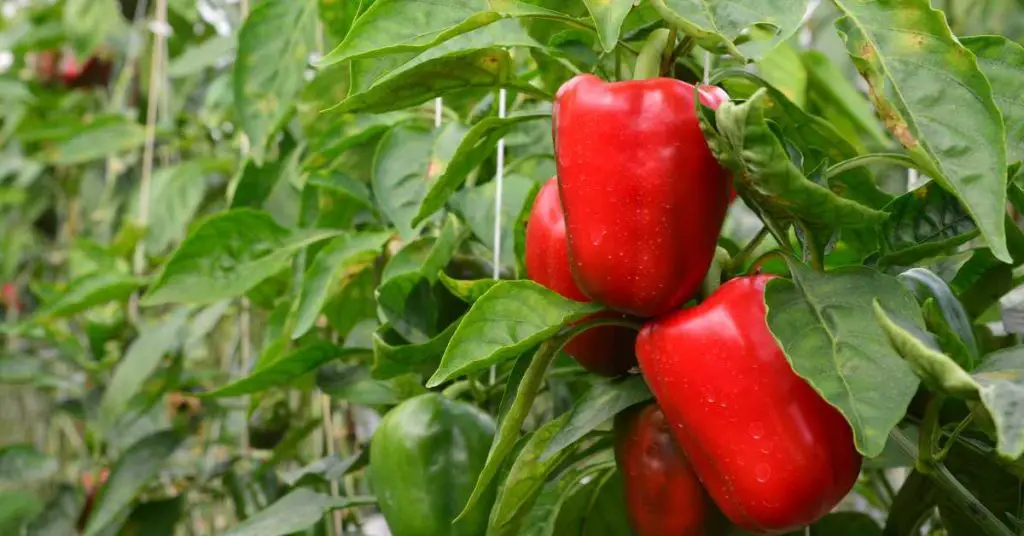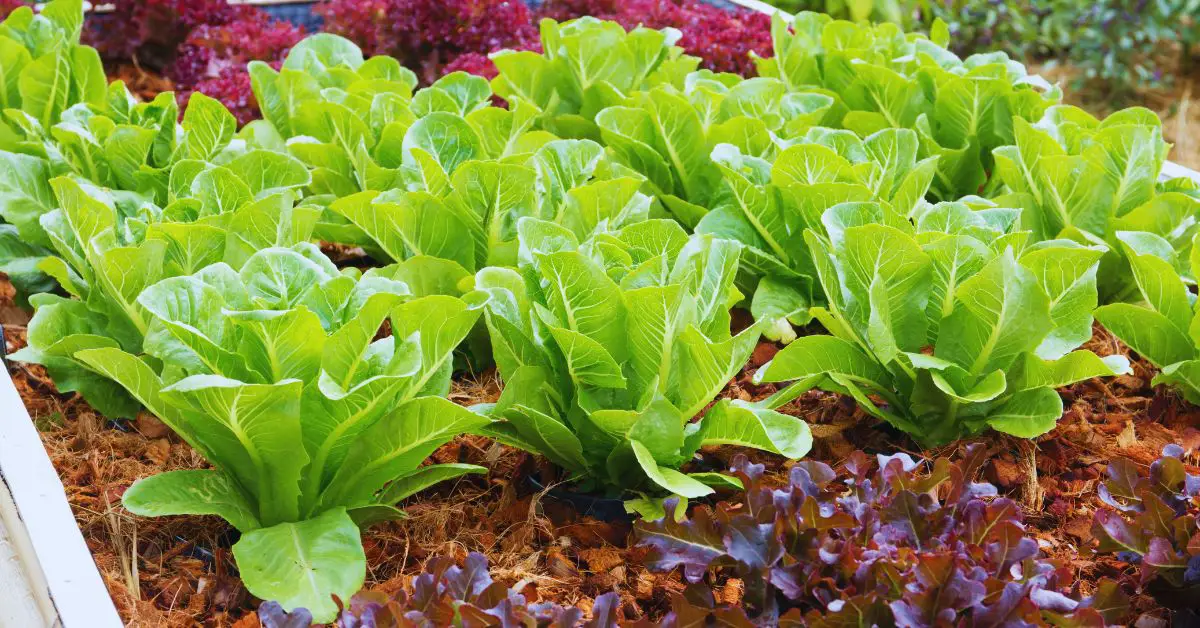Are Bell Pepper Leaves Edible?
Are bell pepper leaves edible? Yes, bell pepper leaves are edible and can be used for a variety of culinary uses. Bell pepper leaves contain vitamins and minerals which makes them a healthy addition to salads, soups, stir-fries, and more.
Bell peppers are a popular vegetable used in various dishes around the world. They come in different colors and are known for their sweet flavor and crunchy texture. However, have you ever wondered if the leaves of bell peppers are edible too?
In this blog post, we will answer that question and explore some interesting facts about bell pepper leaves.
Can You Eat Bell Pepper Leaves?
The short answer is yes, you can eat bell pepper leaves. They are not toxic or harmful to humans when consumed in small quantities. In fact, some people use them as a garnish or add them to salads for extra flavor and nutrition.
However, it’s important to note that bell pepper leaves have a slightly bitter taste compared to sweet fruit. Some people may find this taste unpleasant, while others may enjoy it. Additionally, the texture of the leaves can be tough and fibrous, which may not be appealing to everyone.

Are Pepper Leaves Safe to Eat?
Yes, pepper leaves are generally considered safe to consume. However, it is important to note that some varieties of pepper plants may be toxic, so it is best to familiarize yourself with the type of pepper you have before consuming its leaves.
Additionally, make sure that your pepper leaves are free of any pesticides or other contaminants.
What Are the Benefits of Eating Pepper Leaves?
Bell pepper leaves contain several nutrients that can benefit our health. They are rich in vitamins A and B, both of which are important for maintaining healthy skin, eyesight, and immune system function.
The leaves also contain antioxidants that help protect our cells from damage caused by free radicals.
Pepper leaves also contain a small amount of capsaicin which is the component that makes peppers spicy.
The leaves won’t necessarily be spicy like the pepper fruit but can have a mild peppery taste.
Furthermore, bell pepper leaves are a good source of fiber which promotes digestive health and helps regulate blood sugar levels.
They also contain minerals such as potassium which is essential for heart health and regulating blood pressure.
How to Use Bell Pepper Leaves
If you want to try eating bell pepper leaves, there are many ways to incorporate them into your meals. Here are some ideas:
- Add chopped bell pepper leaves to your salads for added nutrition.
- Use whole or chopped leaves as a garnish on top of soups or stews.
- Blend the leaves with other ingredients to make a nutritious green smoothie.
- Sautee chopped bell pepper leaves with garlic and olive oil for an easy side dish.
Here is a great example of using bell pepper leaves in dishes:
Can You Eat Bell Pepper Leaves Raw?
Yes, you can eat bell pepper leaves raw. However, as I mentioned earlier, they have a slightly bitter taste and may be tough and fibrous in texture which may not be appealing to everyone.
If you want to try eating bell pepper leaves raw, it’s recommended to use young and tender leaves as they are more palatable than older ones.
You can add them to salads or use them as a garnish for soups and other dishes.
It’s important to wash the leaves thoroughly before consuming them raw to remove any dirt or debris that may be present.
What Is Bell Pepper Leaves Good For?
In other parts of the world, bell pepper leaves have been used in hygiene regimens such as in mouthwash and even in some forms of holistic medicine. It is believed that pepper leaves can be used to treat sore muscles.
Most commonly, pepper leaves are eaten as a reliable food source. They can be cooked or eaten raw and are a great source of vitamins and minerals. They are also low in calories which makes them a great addition to any diet.
FAQs
Here are some common questions about eating pepper leaves:
How Should I Store Pepper Leaves?
If you need to store your pepper leaves, place them in an airtight container in the refrigerator for up to one week. Be sure to check them periodically and discard any leaves that appear wilted or discolored. You can also freeze pepper leaves for up to six months, just make sure they are completely dry before freezing them.
Can I Grow My Own Pepper Plants at Home?
Yes, you can certainly grow your own pepper plants at home. It is important to note that peppers come in a variety of shapes and sizes, so make sure to research the type of pepper you want to plant before getting started.
Additionally, each variety may require different growing conditions such as soil type and water needs. However, if you are willing to put in the effort, you can definitely enjoy a healthy crop of pepper leaves right at home.
Related: How to Grow Bell Peppers From Seed
Are Green Bell Pepper Leaves Edible?
Yes, green bell pepper leaves are edible and can be used in various recipes. They are good for you and feature a mild peppery flavor and make a great substitute for spinach.
They can be used in salads or cooked down into sauces, soups, and stews. They also work well with other vegetables like onions and garlic for a flavorful addition to any meal.
For maximum nutrition and flavor, try adding some fresh green bell pepper leaves to your dishes.
Are Red Bell Pepper Leaves Edible?
Yes, red bell pepper leaves are edible just like the leaves from a green bell pepper or any other color bell pepper. The leaves of these plants are a bonus food that a lot of people overlook. These leaves are delicious in stir-fries or cooked into scrambled eggs.

Are Jalapeno Pepper Leaves Edible?
Yes, jalapeno pepper leaves are edible. However, just like bell pepper leaves, they have a slightly bitter taste and may be tough or fibrous in texture, which may not be appealing to everyone.
It’s recommended to use young and tender leaves as they are more palatable than older ones.
You can use them the same way you would bell pepper leaves.
It’s important to wash the leaves thoroughly before consuming them raw to remove any dirt or debris that may be present.
Keep in mind that jalapeno pepper leaves can also be used in cooking, such as in stews or stir-fries, where they can add flavor and nutrition to your meals.
Are Carolina Reaper Leaves Edible?
Yes, Carolina Reaper leaves are edible and can be used just like any other pepper leaves. They can be eaten fresh in salads or used as a wrap. They can also be stir-fried or used in any way that you would use spinach or any other green.
Can You Eat the Leaves from Pepper Plants?
Yes, you can eat the leaves from pepper plants by pruning the leaves off, and washing them to make sure they are clean. You can use pepper leaves in a number of different ways and in different recipes.
When cooked they have a similar taste and texture to that of spinach and can be used in scrambled eggs, omelets, frittatas, and more.
You can basically use them in any dish that calls for spinach or another green just by substituting them into the recipe.
Final Thoughts
In summary, bell pepper leaves are edible and offer several nutritional benefits when consumed in moderation. While they may not be everyone’s cup of tea due to their bitter taste and tough texture, they can still be incorporated into meals in creative ways for added flavor and nutrition. So next time you’re growing bell peppers or any other pepper plants, don’t throw away those leafy greens – give them a try!





